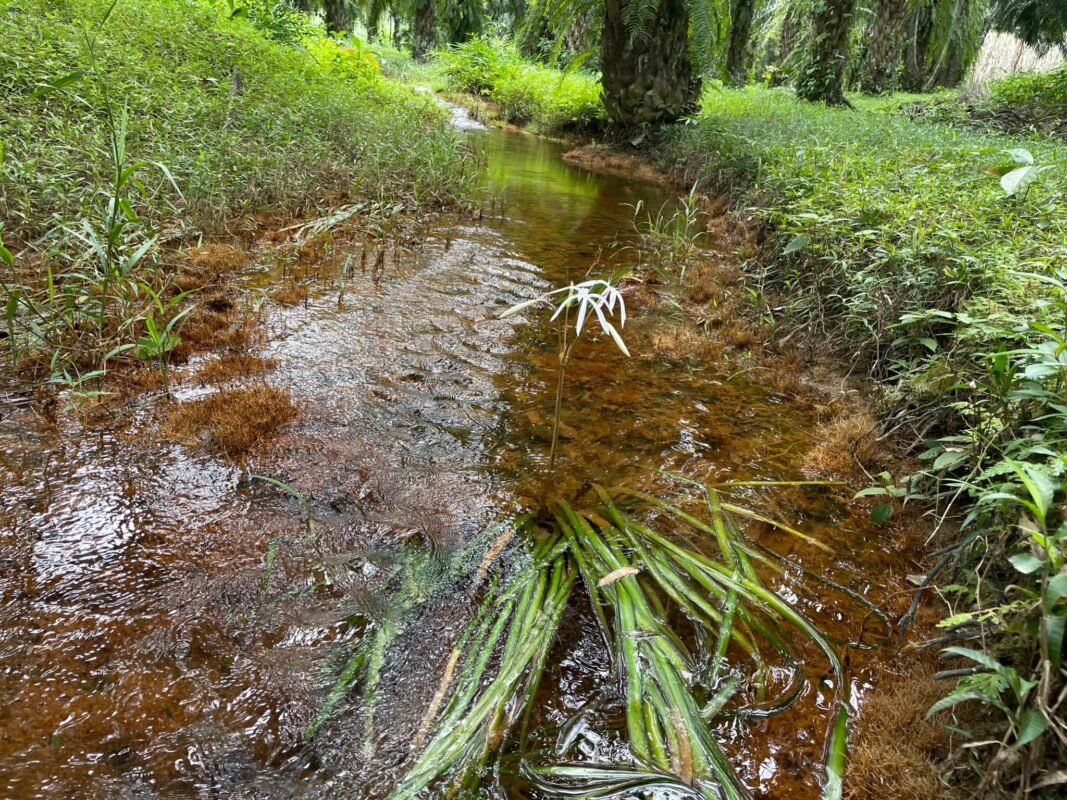
If we mention the name ‘Onion’, many people are likely to know and have seen it before. However, when it comes to the name ‘Water Onion’, many may not have seen or heard of it before.
And why do we suddenly mention this name out of the blue? It’s because ‘Water Onion’ is a water plant found only in the southern region and is becoming endangered. Therefore, we would like to introduce this type of water plant to you.

“Water Onion” (Onion plant, Thai onion plant) is a type of aquatic plant with the scientific name Crinum thaianum, belonging to the Amaryllidaceae family. It is considered one of the most beautiful and rarest aquatic plants which is found exclusively in the lower parts of Ranong Province and the upper parts of Phang-nga Province.
In Ranong, Water Onion is found in Naka Canal, Nakha subdistrict, Suk Samran District, and in Bang Pru Canal of Kapoe District. As for Phang-nga, it is found in many canals in Kuraburi District and various other small canals in the border area between Kuraburi and Takua Pa Districts.

And currently, Water Onion is only found in just 1% of its original habitat areas and is scattered. Therefore, it has been listed as an endangered-plant species by the International Union for Conservation of Nature (IUCN Red List) since 2011. The decline is attributed to the collection of bulbs for ornamental water plants and from the excavation of canals to address flooding issues.


Water Onion grows well in loamy, sandy, and loamy-sandy soils, primarily found in fertile headwater areas. These are streams with good water circulation but not excessively strong currents. Water Onion serves as an indicator of water and canal fertility. It blooms during the early dry season in the upper watershed areas, typically from late September to December. Its beautiful flowers, coupled with its rarity, earned it the title “Queen of the Rivers”.

The status of Water Onion has not yet been included in the Convention on International Trade in Endangered Species of Wild Fauna and Flora (CITES) and is not protected by any laws in Thailand. However, at the local and community levels where Water Onion is found, there have been conservation and restoration activities, along with various regulations prohibiting the excavation of Water Onion bulbs for trade. Examples include the Sri Nakha Phloen Phai Society, the Bang Pru Canal Conservation Group, the Huai Sap Conservation Group, the Nai Tui Conservation Group, the Bang Soi Conservation Group, and the Bang Wan Water Onion Village Group, supported by the International Union for Conservation of Nature (IUCN) and the Upper Andaman River Basin Conservation Network.

From the initial exploration of the distribution of Water Onion from November 2566 to March 2024, covering 35 canals, a total of 208,854 bulbs of Water Onion were found. This is compared to the survey conducted in 2561, which covered 20 canals and found 23,828 bulbs of Water Onion. It is gratifying that the results of the Water Onion survey have shown an increase in quantity due to various factors such as systematic restoration, network building, and community involvement in conservation efforts. Through surveys conducted along every canal, the population of Water Onion has increased through seed dispersal and restoration efforts including both basket planting and appropriate planting times, resulting in a high survival rate.

If you wish to see the Water Onion flowers blooming, you can go around late September to December every year.
Information: Wikipedia, พลับพลึงธาร FC fanpage Photos: พลับพลึงธาร FC fanpage
